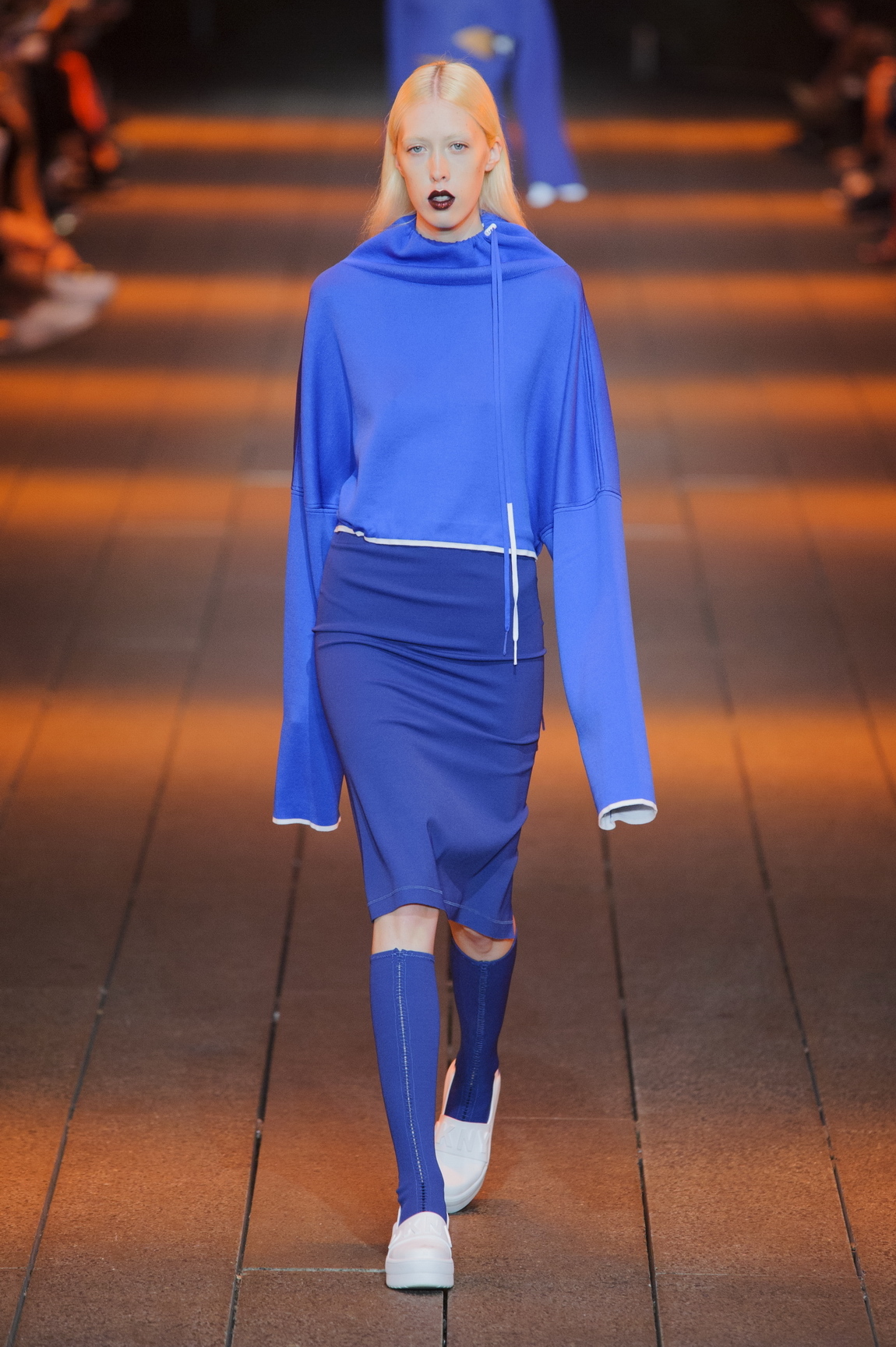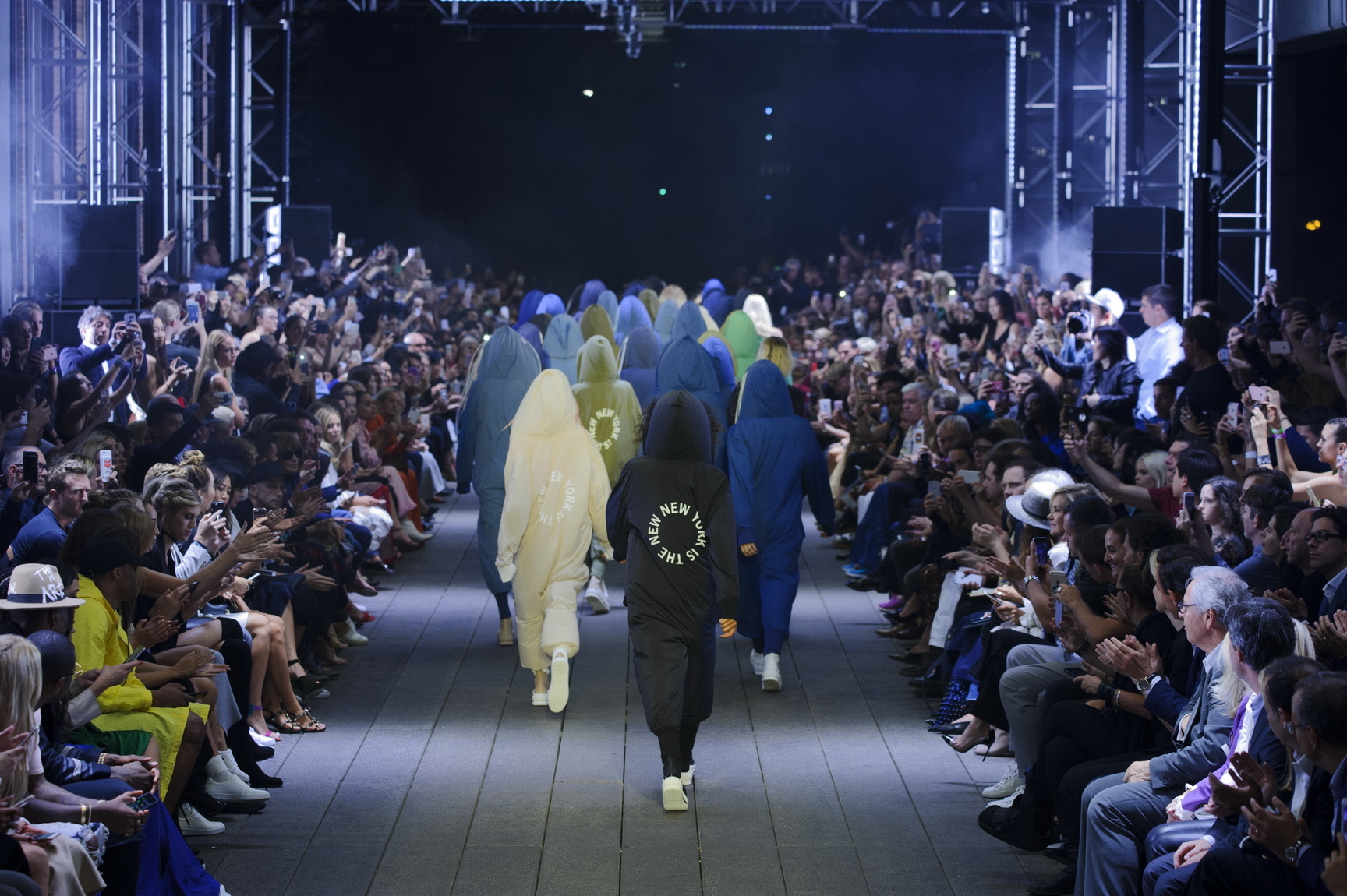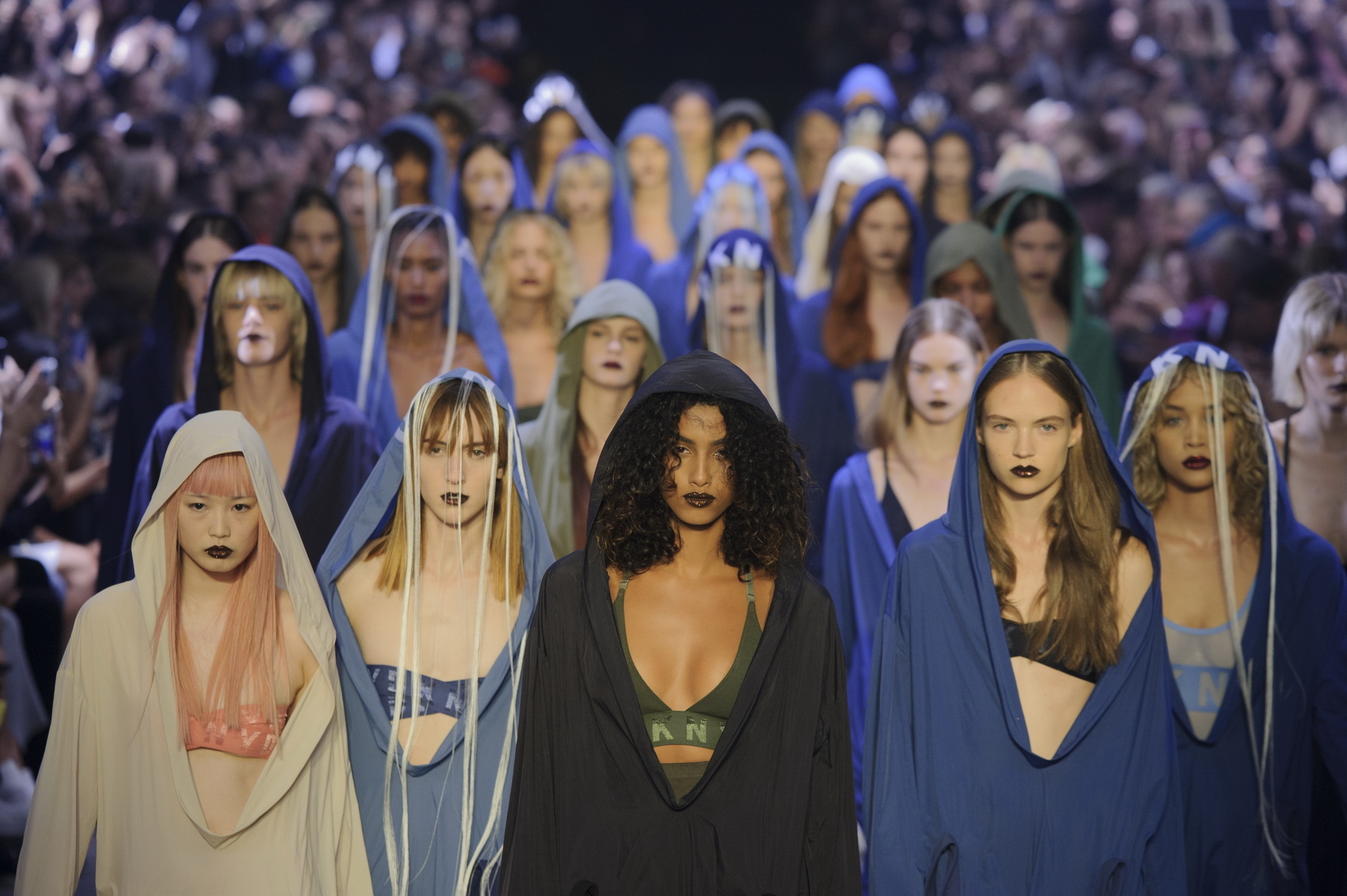Monday’s big event in New York was DKNY where Public School’s Maxwell Osborne and Dao-Yi Chow presented their sophomore collection for the brand no longer owned by LVMH. This summer, Bernard Arnault’s power group sold it to G-III, which owns G.H. Bass and Andrew Marc, along with the Donna Karan mainline. That brand had already lost the designer whose name it carries last year when Karan retired in a move that put it on hiatus. No one knows where Oprah Winfrey has been shopping since, but G-III has promised a revival of the house so entrenched in New York fashion. If Donna Karan defined slick, intelligent, expensive Upper East Side dressing, DKNY — Donna Karan New York — epitomized downtown cool. For a brand that actually has the city’s name in it, the responsibility is huge, and for its first outing under G-III expectations were even bigger. Why? Because the celebrity-driven Yeezy, which showed here last Wednesday, has become the most exciting event at New York Fashion Week, which seems to lack the hype and glitz and cool factor of a time when Calvin Klein and cK Jeans and indeed DKNY were the holy grail of any self-respecting cool kid’s wardrobe. (I.e. the 90s.)


There’s a huge amount of goodwill towards those brands — a willingness for them to be on top, fueled by that generation of people who were teenagers in the 90s and now make up a rather influential part of the fashion industry. New York is waiting for Raf Simons to breathe fresh air into its fashion week when he shows his first collection for Calvin Klein next season, but at DKNY Osborne and Chow were looking ahead, too. “In the future, what will define New York style?” DKNY’s show notes opened. “People talk a lot about our city’s past, but we like to think about what’s next.” They weren’t beating around the bush, and neither was their collection, a futuristic proposal for the sporty urban wardrobe. Yeezy does that well, and with more Kardashian social media power behind it than the Kylie Jenner Lip Kit, but cool and coveted as Kanye’s label is, the nostalgic brand value of DKNY is something money and fame could never buy. For that reason it was a clever move on Public School’s part to flaunt the DKNY logo where they could, such as on the wrestling capes that made up the finale. The rest of the collection, however, relied on carving out that future New York style.


It had to be minimal in a sporty way — that’s the American spirit — and Bella Hadid’s opening look lived up to it: a kind of sculptural, heavily cleavaged, hooded mini-dress styled with thigh-high sneakers. It was light-years away from the prommy debutante dresses the runways of this city find so irresistible, which easily scored the collection some early top marks. But while Osborne and Chow went to town on design in a slick volume extravaganza that hinted at everything from Cristobal Balenciaga to Rick Owens, it was the simplest stuff that offered the most realistic idea of a future DKNY — for the hip New Yorker. A bright blue, super drop-sleeved top with a drawstring neck and a those trendy long sleeves, or the skirt it was paired with, a kind of retro take on a jersey school girl number. There was a terrific pin-striped suit, as sporty as a suit could ever get, with oversized trousers — high-waisted and elasticated — which were tucked into an ankle-length trainer like a ghetto sarourel pant. (You get to call it ‘pant’ when you’re in New York.) Or a see-through, two-tone utility jumpsuit, which had the effortless cool DKNY should stand for written all over it. The future of this genre of New York fashion is actually a lot simpler than it seems.

Credits
Text Anders Christian Madsen
